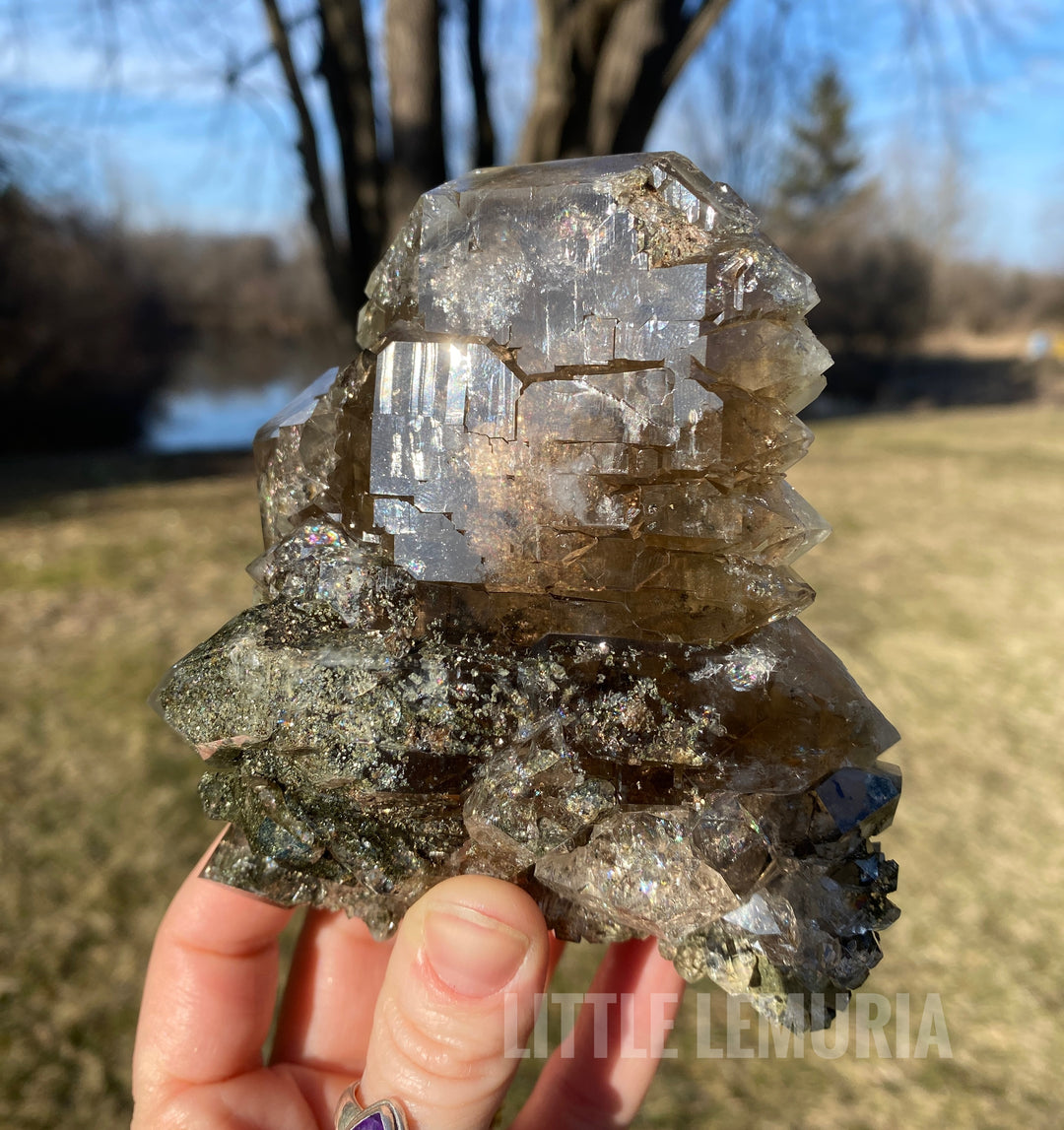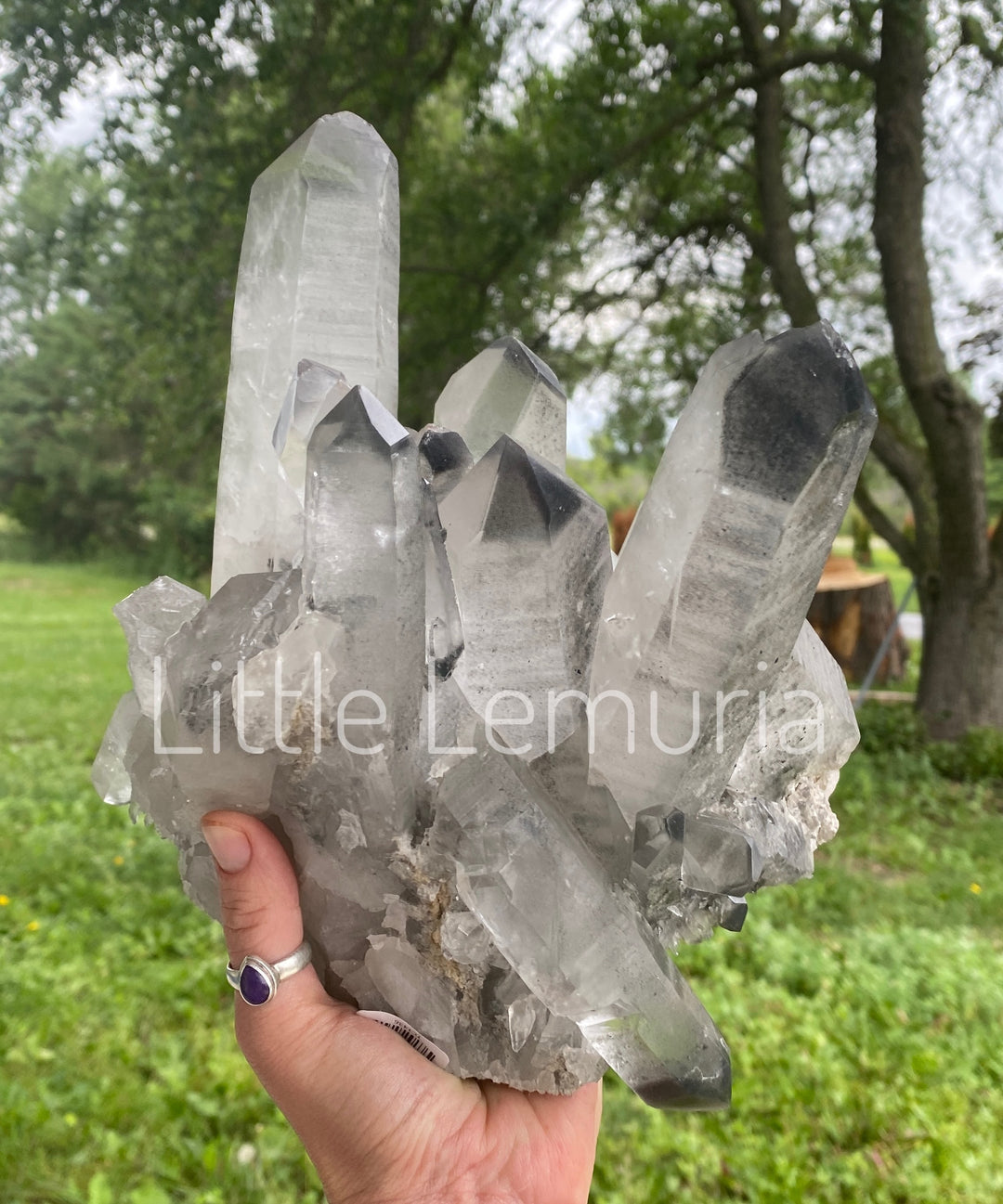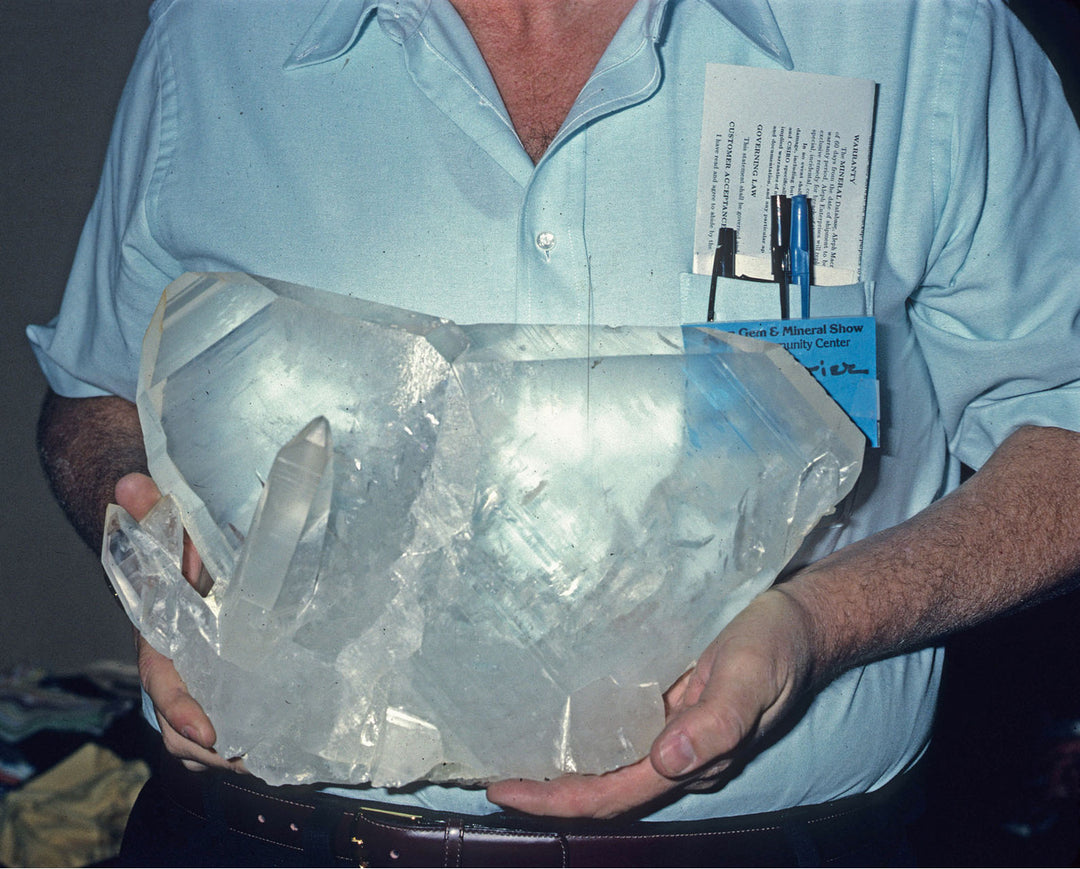Fakes and Frauds: Part 2
The time has come to follow up on last month's blog about common treatments, repairs, and enhancements. In this second installment I will be referencing specific stones that are often misrepresented. Once again, this is in no way an extensive list, but rather an overview of commonly corrupt crystals.
Chrysanthemum stone is a popular decorative stone with radiating white “petals” embedded in a black Permian-aged metamorphic limestone. These “petals” are made up primarily of calcite and chalcedony which replace the original crystal, celestine, that formed the flower shape. This is a straight-forward enhancement that is easy to spot. White paint is used to enhance the areas of white crystallization, but sadly in the process can do the opposite and cover up any remaining crystal structure by burying it in paint! Can you tell which one is enhanced and which is natural below?

Malachite is somewhat of a beginner’s fraud situation. Once a collector becomes familiar with this stone, it would be difficult to execute a scam successfully. Malachite is a green stone with unique cylindrical patterns and lines running throughout. Someone had the bright idea one day to take polymer clay and create a faux malachite. While this might be a fun weekend craft, it does not go over well at gem shows. One way to tell a fake from the real deal is by weight. The molecular weight of malachite is 225.15 g/mol where quartz is only 60.083 g/mol. This means there is a noticeable difference in feel when you pick up malachite. It should be much heavier than it looks, even for a rock. Polymer clay on the other hand is light as a feather in comparison. If it’s not heavy for its size, it’s not malachite.

Amber is a tough one. There are lots of amber fakes not only in the crystal world, but it has infiltrated the souvenir industry as well. Encapsulating insects in amber colored resin to sell as keychains at a gas station isn’t a crime, but selling resin spheres at the price of Baltic Amber is unforgivable. Here are some tips to make sure you’re getting the real deal! First, visually examine the specimen for imperfections. Amber is nature made and there should be inconsistencies piece to piece. Next, touch the amber. Unlike resin or glass which feels slightly cold to the touch, amber feels the same temperature or warmer than our own body. Keeping a UV light on hand can also be helpful when identifying amber. Be familiar with the proper color fluorescence of amber for the locality before relying on this test. The last two tests I will mention are the saltwater test and the rub test. Mix 2 cups warm water with ¼ cup of salt and see if your amber floats. If it does not float, it is not amber. The rub test can be performed anywhere with no mess. Take the amber in question and rub on the palm of your hand creating enough friction it begins to feel warm. Put your nose down into your hand with the amber and there should be piney scent coming off the amber rather than the smell of chemicals.

Chlorite phantom clusters, also known as Chromium quartz, have been the crystal scam of the decade. I still see at least one person each gem show pick one up and marvel at how amazing “mother earth’s creations” are. Honestly, it makes me nauseous. I am not the scam police, but I do typically hang around to see if the seller is going to come clean with the true origin of the stone. In my experience, sellers that bother having this stone at their booth are honest about 50% of the time. This stone has a few hallmarks that can’t be hidden. One is the unusually dense hydrothermal needle quartz sticking out around the prismatic faces. The other is the rack marks on the bottom of the piece indicating it was clearly altered in a laboratory. Synthetic overgrowth can be lumped in this category too. Broken tips can be regrown in a lab, but hardly come close to nature’s perfection.


Moldavite. I cringe just thinking about the people who might have pieces in their collection they are proud of and in fact they are fake! Moldavite fakes have been around since the 1800s. Many fakes are in museums that accepted them as the jewelry of royalty, only later to find out they were simply green glass. One of the best ways to tell if your POLISHED moldavite is authentic is to check for Lechatelierite under a really good loop or with a microscope. These will appear as hair like inclusions, along with micro bubbles in genuine moldavite. These very thin strands are hard to spot through the natural surface of a ROUGH moldavite. In this case you first want to visually examine the piece. Does it appear shiny and wet looking? Run away. Moldavite should not have an oily appearance. Moldavite also should not be the color of a Heineken bottle. However, making an assessment based only on color should not be your deciding factor. Check for seams. If the “moldavite” is simply green glass molded to appear like the real deal, you often see the telltale seams from the mold despite their efforts to hid them. Lastly beware of textured moldavite spheres…this simply is not a thing your average seller would have genuine pieces of. Moldavite does have a few “perfect shape” natural forms, but those make up less than 1% of all moldavite and the price is going to be more than you can stomach. Moldavite spheres that are polished are certainly out there. There should be significant micro bubbles, Lechatelierite, and the price should be about double what a natural piece of the same size would cost. Why? Because it takes a single piece of rough at least twice the weight of the sphere to cut and polish a perfect orb.

Andara crystals. This will be short and sweet. There is no such thing as “authentic andara” because they are slag glass. This scam has been around since 2013 and somehow is still going. At best Andara “stones” are collected from the dumping grounds of old glass factories and at worst they come from companies selling landscape glass by the yard. Words associated with this glass are “entherium” which is a non-existent word pulled out of the ether and means nothing. Monatomic, which simply means “one atom” which this material is obviously not one atom. Another fun word associated with Andara is “Heliocentric” meaning they absorb and reflect light…which is no different than basically everything else on earth. This name “Andara” was trademarked by a company called “purplelotus” and once again, it is not possible to trademark a scientific mineral name, so this is completely made up. Andara is 100% a scam. There are no “authentic” Andara crystals.

Lastly, I’d like to mention Nuummite. This one even duped me a few years ago, so hopefully if you made it this far in the blog you’ll be spared the same scam. Nuummite comes from only one place in the world, Greenland. There is not a massive volume of this material in every shape and size, its actually quite rare in its authentic form. The name Nuummite is not an approved mineralogic name. It is part of the Anthophyllite-Gedrite Series and its hallmark quality is iridescent orthoamphiboles (similar to Arfvedsonite and Astrophyllite). My best advise is to steer clear of schiller. These stones don’t have the same flash as labradorite or larvikite, they instead have metallic elongated flashes.

Unfortunately I could carry on with more fakes and frauds such as dyed howlite “turquoise” and baked amethyst “citrine”, Herkimer diamonds from Pakistan, and rehydrated fluid inclusions. The list is ongoing and ever changing. I highly recommend becoming familiar with the site Mindat.com and their message boards. There is a wealth of information free for the taking. Additionally, find sources not selling the stone in question to verify information you have been given by the seller. Don’t be afraid to ask questions. It’s the seller’s responsibility to do their research as well. There is no place for a “buyer beware” mentality in the crystal community. Thank you to everyone doing their part to educate and become educated about our industry.






